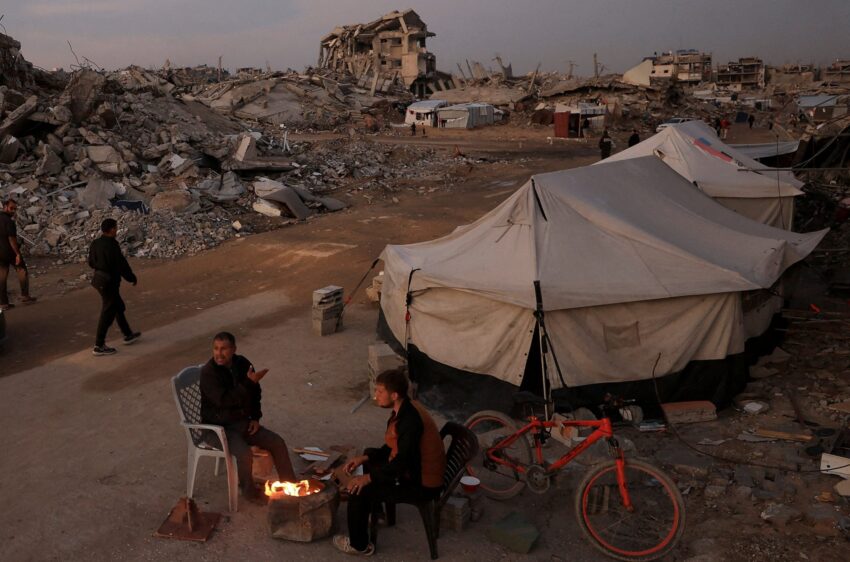When the UN Security Council approved a US-backed resolution Monday to deploy an International Stabilization Force in Gaza, it acknowledged a core truth Israelis have known for years: The security vacuum that enabled Oct. 7 cannot be allowed to return. Encouraging as this may be, two realities must remain immovable as the world designs Gaza’s future: Hamas cannot retain any foothold, and Israel cannot be expected to outsource its security to external actors. I was reminded why these principles matter last week as I traveled to both Israel and Gaza. Forty-eight hours and a five-minute drive separated my visits to two places that define this war and the world’s misunderstanding of it. The first was Kibbutz Nir Oz, 117 of whose 415 residents more than a quarter were murdered or kidnapped on Oct. 7. I walked around with Irit Lahav, who hid in her home with her daughter for 12 hours as Hamas terrorists tried five separate times to break down her door. She jammed a boat oar beneath the handle and prayed it would hold. Before the attack, Irit believed deeply in coexistence. She was one of the many Gaza-border Israelis who advocated for Palestinians and regularly drove sick Gazans to Israeli hospitals, as did her neighbors Chaim Peri and Oded Lifshitz who were both kidnapped and taken alive into Gaza, where both died. “I thought the Palestinians were good people like me who want peace,” Irit told me “Now I understand they really, really hate us and they think that rape, murder and kidnapping are legitimate.” Two days later, I stood in Sajaiya in Gaza, a former Hamas stronghold. I looked out at a moonscape of collapsed homes and exposed rebar. Only stray dogs moved through the ruins. Even amid the devastation, Hamas’ presence was unmistakable. IDF soldiers there told me they are still uncovering tunnel shafts, operating under the assumption that fighters move beneath the rubble. It was here that the body of Israeli-American hostage Itay Chen was recently discovered and returned under the ceasefire deal. From the rubble of Sajaiya, I could see the homes of Nahal Oz, another Israeli border community no more than a five-minute drive away. The distance between a Hamas command complex and the homes of Israeli families is not measured in miles. It is measured in minutes. For years, international discourse treated Gaza as a remote conflict a problem “over there,” disconnected from daily life “over here.” That illusion shattered on Oct. 7, when thousands streamed across the fence, some emerging from tunnels that begin in the very neighborhood where I stood. What happened in Nir Oz and the other border communities was not a lightning strike, but the predictable result of leaving a heavily armed, ideologically driven movement embedded minutes from Israeli homes. Two years later, the threat remains. “The only thing standing between the Hamas terrorists still left here and Israeli civilians is the IDF soldiers here,” one officer told me. Diplomats talk about “the day after,” but the ground tells a different truth: Tunnels still run beneath Gaza; weapons caches remain; and Hamas’ ideology is wholly intact. No international plan can succeed while this reality persists. Which brings us back to the UN’s stabilization force. Its success hinges on two principles. First: Hamas cannot retain any foothold of power. Any complex of tunnels or any zone where it can operate with impunity becomes a staging ground for rearmament and renewed assault. Anything less than dismantling Hamas’ military infrastructure risks recreating the exact conditions that made Oct. 7 possible. Second: Israel cannot outsource its security. History shows that international monitors and peacekeepers do not prevent terrorism aimed at Israel’s civilians. Stabilization cannot mean asking Israelis to entrust their safety to outsiders who do not bear the consequences when the system fails. As Secretary of State Marco Rubio put it: “The Israelis don’t want to govern Gaza. We don’t want to govern Gaza. No country in the Middle East wants to govern Gaza. But it’ll take time to build up that capability, and in the interim someone has to provide security.” Back in Nir Oz, Irit told me she wants nothing more than to rebuild the community her parents helped found. But she also told me she checks her door again and again at night, terrified that terrorists could sprint across the fields and break in once more. The end of a war is not defined by the absence of rockets, or the passage of UN resolutions. It is defined by whether families in Nir Oz and Nahal Oz and someday in Sajaiya, too can raise their children without fear. Until Hamas’ foothold is removed entirely, that day cannot come.
https://nypost.com/2025/11/17/opinion/on-the-israel-gaza-border-only-one-path-to-peace-eliminate-hamas/
